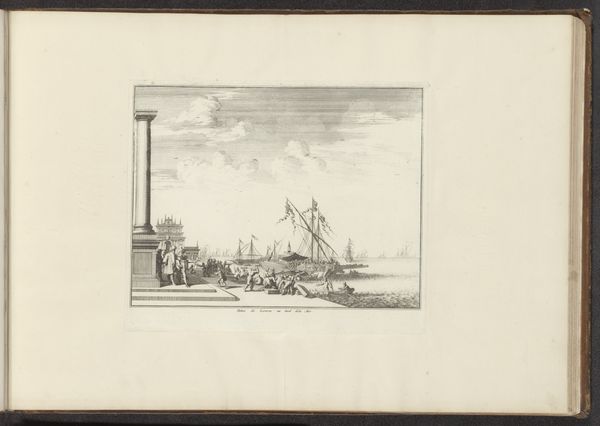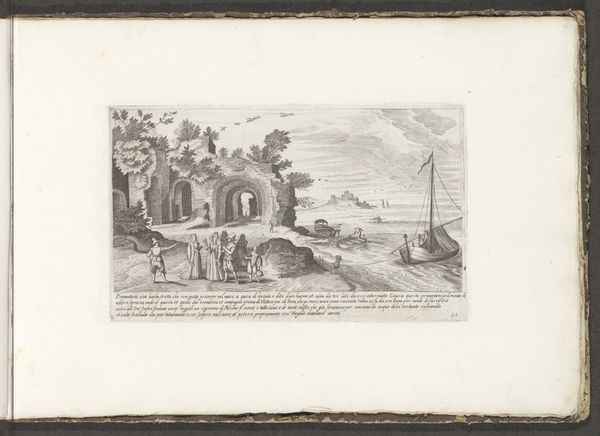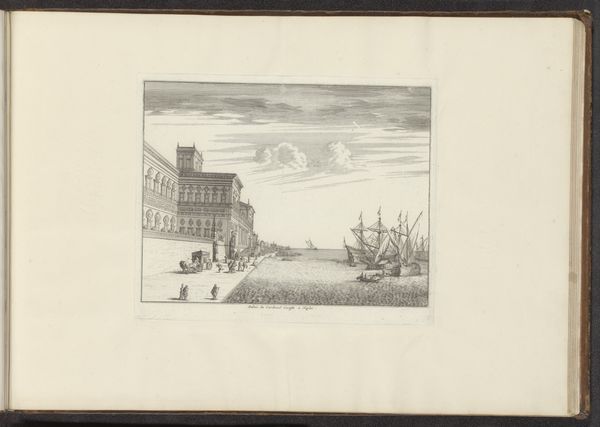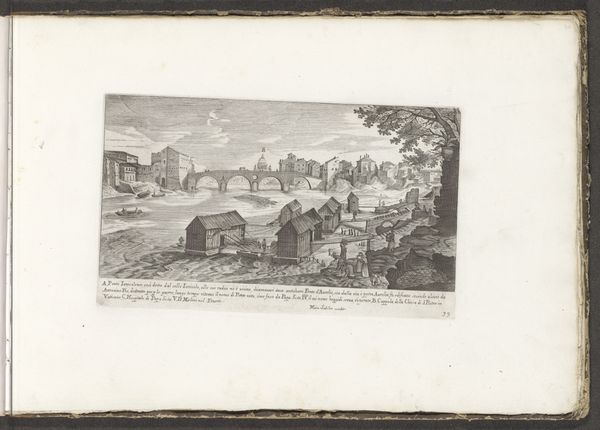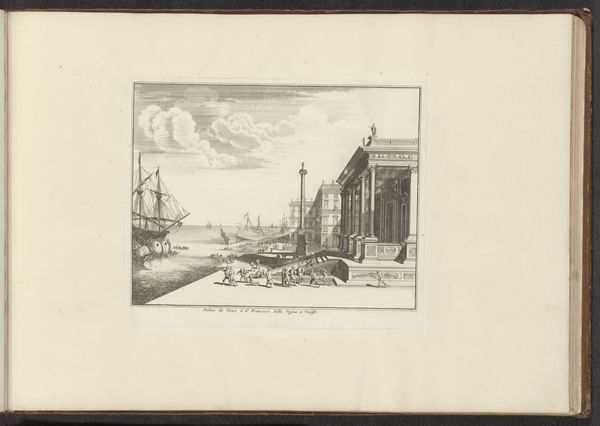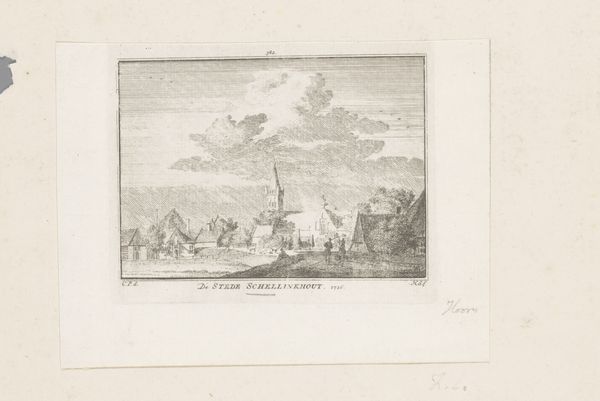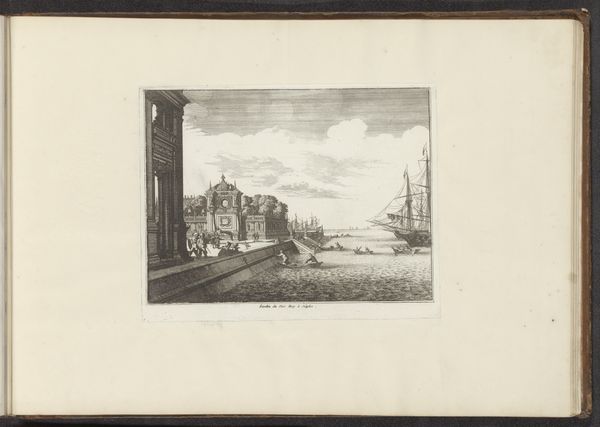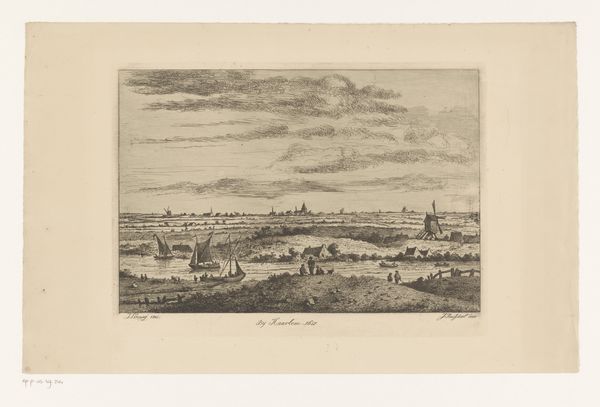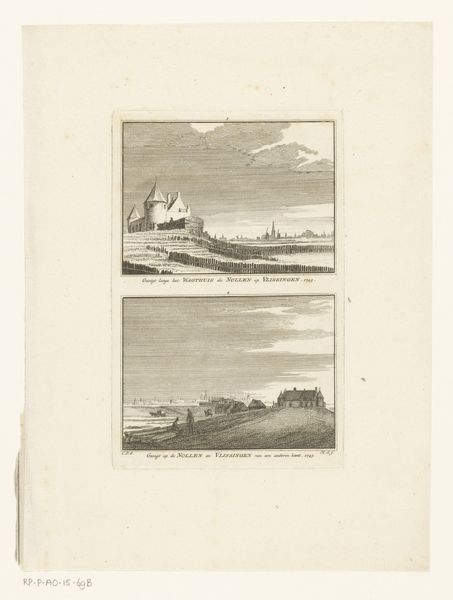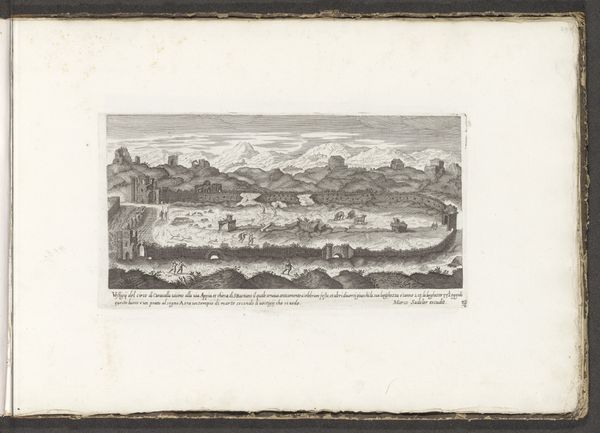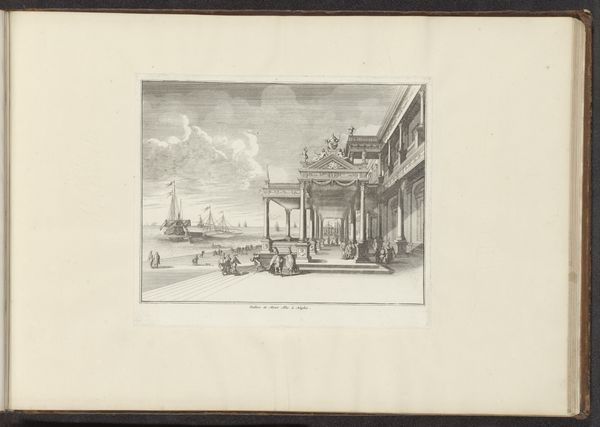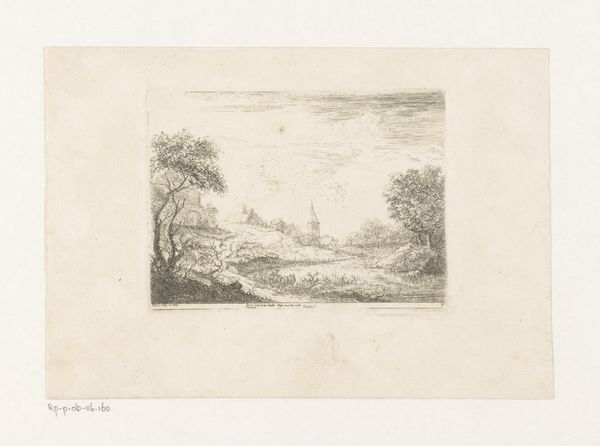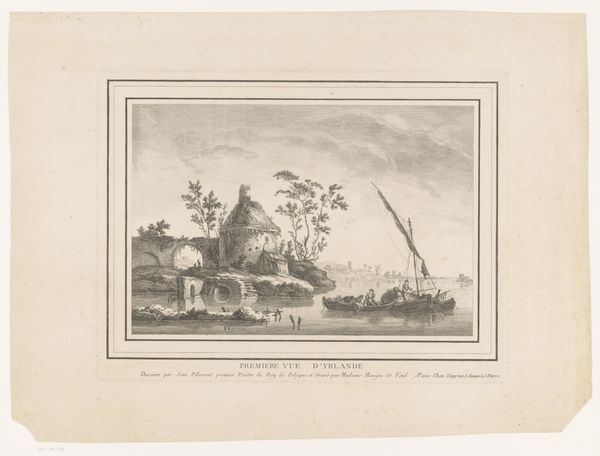
Gezicht op de haven met een vuurtoren en een paleis te Napels c. 1700 - 1710
0:00
0:00
print, engraving
#
baroque
# print
#
landscape
#
cityscape
#
engraving
#
sea
Dimensions: height 220 mm, width 268 mm
Copyright: Rijks Museum: Open Domain
Editor: Here we have an engraving from around 1700 to 1710, "Gezicht op de haven met een vuurtoren en een paleis te Napels," or "View of the harbor with a lighthouse and a palace in Naples" by an anonymous artist. The detail is just incredible. It's quite a bustling scene. What strikes you about this piece? Curator: Well, immediately I think about the maritime power structures at play during that era. Naples, strategically vital, was constantly fought over. Consider how this image presents the city: a landscape dominated by fortifications and maritime activity. Who is this "view" for, and what does it communicate about power and control? Editor: That's interesting, I hadn't considered that. I just saw a pretty cityscape. Are you suggesting this was a form of…propaganda? Curator: It might not be overt propaganda, but definitely a demonstration of dominance. These kinds of harbor views were often commissioned to showcase the might and modernity of a city – linking trade, military strength, and architectural prowess. Look at how the lighthouse and palace are highlighted, symbols of power and order amidst the activity. Who benefits from this portrayal? Editor: So, it's not just a neutral depiction. The artist, or rather, the patron, had an agenda. I see that the details emphasize those specific aspects now. How do you think the average Neapolitan would have viewed this image, versus someone from, say, Amsterdam, at the time? Curator: That's the key. A Neapolitan might read it with a sense of local pride, or perhaps resentment toward the ruling powers. For someone in Amsterdam, a major maritime power, it could serve as a point of comparison, a celebration of global trade networks, or even a warning about competing interests. Editor: It’s amazing how one image can hold so many layers of meaning based on who’s looking at it and their socio-political context! I'll definitely view cityscapes differently from now on. Curator: Precisely! Art acts as a mirror reflecting not only the subject it depicts but also the power dynamics shaping its creation and reception. This piece provides a tangible link between art history and sociopolitical forces.
Comments
No comments
Be the first to comment and join the conversation on the ultimate creative platform.
